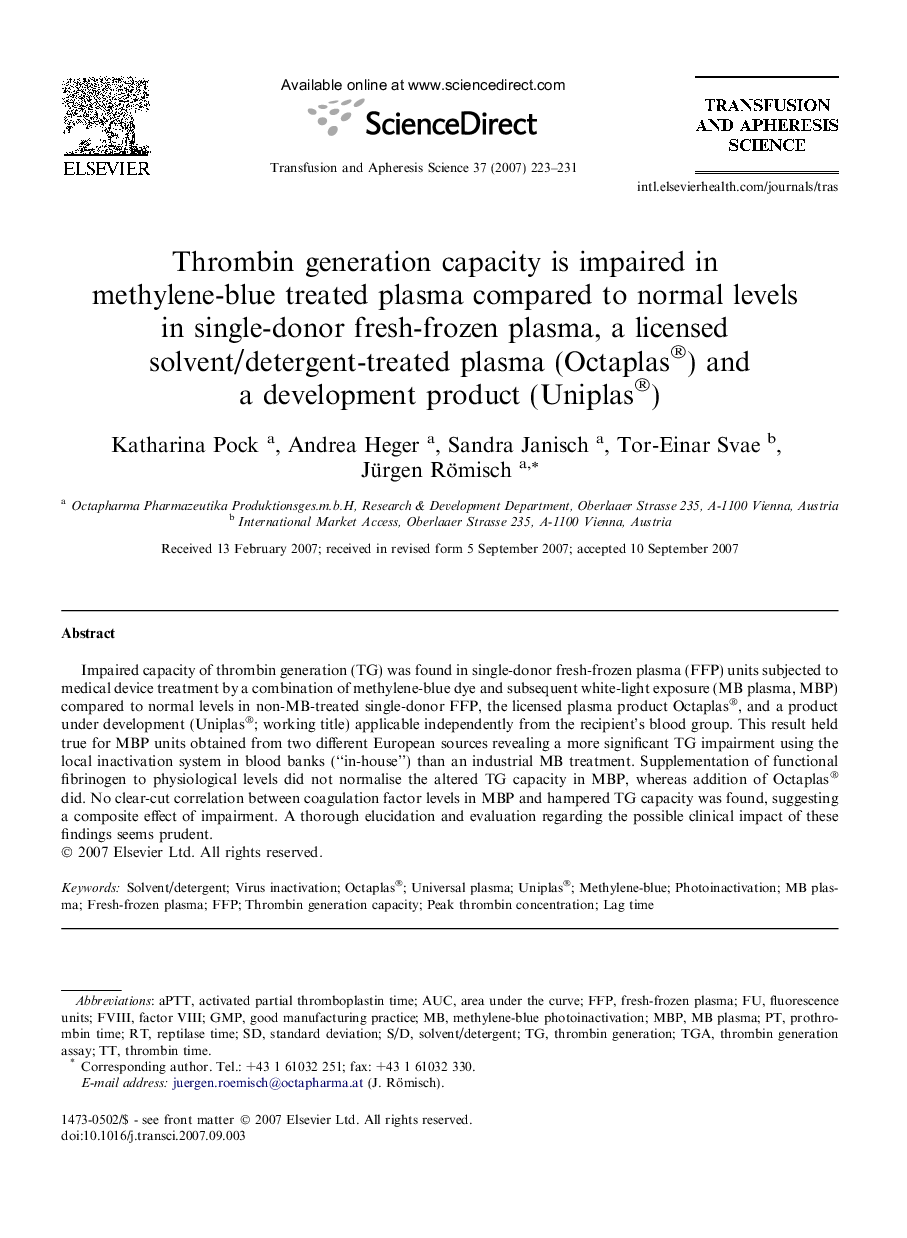| Article ID | Journal | Published Year | Pages | File Type |
|---|---|---|---|---|
| 3336159 | Transfusion and Apheresis Science | 2007 | 9 Pages |
Impaired capacity of thrombin generation (TG) was found in single-donor fresh-frozen plasma (FFP) units subjected to medical device treatment by a combination of methylene-blue dye and subsequent white-light exposure (MB plasma, MBP) compared to normal levels in non-MB-treated single-donor FFP, the licensed plasma product Octaplas®, and a product under development (Uniplas®; working title) applicable independently from the recipient’s blood group. This result held true for MBP units obtained from two different European sources revealing a more significant TG impairment using the local inactivation system in blood banks (“in-house”) than an industrial MB treatment. Supplementation of functional fibrinogen to physiological levels did not normalise the altered TG capacity in MBP, whereas addition of Octaplas® did. No clear-cut correlation between coagulation factor levels in MBP and hampered TG capacity was found, suggesting a composite effect of impairment. A thorough elucidation and evaluation regarding the possible clinical impact of these findings seems prudent.
